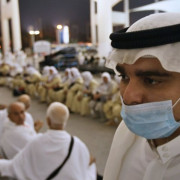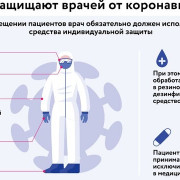Sars-coronavirus modulation of myocardial ace2 expression and inflammation in patients with sars
Содержание:
Subendendocardial Ischemia
An example of subendocardial ischemia with diffuse ST depression
Subendocardial ischemia is ischemia that is not transmural. It is mostly caused by demand ischemia where energy supply to cardiomyocytes is insufficient for the work force, e.g. during extreme hypertension, aortic valve stenosis, extreme left ventricular hypertension, anemia, atrial fibrillation with rapid ventricular response.
On the ECG often diffuse ST depression is present. Cardiac enzymes (CK-MB, Troponine) may or may not be elevated depending on the severity.
References
Error fetching PMID 16777513: Error fetching PMID 17825710: Error fetching PMID 10987628: Error fetching PMID 12356646: Error fetching PMID 10653675: Error fetching PMID 11265742: Error fetching PMID 1116248: Error fetching PMID 18019666: Error fetching PMID 12716101: Error fetching PMID 15851335: Error fetching PMID 17951284: Error fetching PMID 15992631: Error fetching PMID 6121481:
- Error fetching PMID 12356646:
- Error fetching PMID 10987628:
- Error fetching PMID 17951284:
- Error fetching PMID 17825710:
- Error fetching PMID 1116248:
- Error fetching PMID 6121481:
- Error fetching PMID 18019666:
- Error fetching PMID 15851335:
- Error fetching PMID 12716101:
- Error fetching PMID 16777513:
- Error fetching PMID 10653675:
- Error fetching PMID 11265742:
- Error fetching PMID 15992631:
Сценарий 2:Естественный отбор, происходящий в организме человека после зоонозного переноса
Вполне возможно, что предок SARS-CoV-2 попал в организм человека, приобретя геномные характеристики, описанные выше, путем адаптации во время передачи от человека к человеку. После того, как эти изменения были получены, они позволили пандемии развиться и создали достаточно большое количество прецедентов, чтобы запустить систему наблюдения, которая и обнаружила новый вирус. Все секвенированные до настоящего времени геномы SARS-CoV-2 имеют генетические признаки, описанные выше, и, таким образом, происходят от общего предка, который также обладал данными признаками. Присутствие в панголинах RBD, очень похожего на SARS-CoV-2, позволяет сделать вывод, что это также было возможно в вирусе, который стал распространяться и на людей. Оценки времени происхождения последнего общего предка SARS-CoV-2, сделанные с использованием текущих данных о вирусе, указывают на появление возбудителя в конце ноября 2019 года – начале декабря 2019 года, что согласуется с самыми ранними ретроспективно подтвержденными случаями. Следовательно, этот сценарий предполагает период нераспознанной передачи у человека между начальным зоонозным событием и приобретением многоосновного сайта расщепления. По сути, эта ситуация характерна для MERS-CoV, для которой все случаи заболевания людей являются результатом повторного распространения вируса с верблюдов-дромадеров, приводящих к спорадическим инфекциям или коротким цепям передачи, которые в конечном итоге проходят без адаптации к дальнейшей устойчивой передаче. Исследования полученных от человека образцов вируса могут дать информацию о том, как именно произошло его распространение и эволюция. Ретроспективные серологические исследования также могут быть информативными, поэтому было проведено несколько подобных исследований, показывающих низкую активность SARSCoV-подобных коронавирусов в некоторых районах Китая. Однако эти исследования не смогли критически ответить на вопрос, были ли воздействия вызваны предшествующими инфекциями SARS-CoV, SARS-CoV-2 или другими SARSCoV-подобными коронавирусами. Дальнейшие серологические исследования должны проводиться для определения степени предшествующего воздействия SARS-CoV-2 на человека.
CHD treatment
Assistance in myocardial infarction can be divided into two large groups: first aid and medication treatment. The tasks of specialists providing first aid include saving a patient’s life. In the process of medical treatment, patients are helped to restore the work of the heart while simultaneously rehabilitating after the loss of some physical possibilities.
First aid
It starts to appear even at the pre-hospital stage, when the person only felt a lot of pain, but emergency medical care has not yet arrived.
Procedures for the First Aid:
- The patient should be seated or laid, while trying to calm him down. The optimum position is sitting or halving.
- If the patient has tight clothing, then it should be removed or unbuttoned.
- The previously prescribed medicine should be given in the dosage indicated by the doctor. If you have nitroglycerin on hand, you can also give it to the patient. Although the drug does not completely relieve pain, it can weaken the attack somewhat.
- Ambulance should be called if, after three minutes from the beginning of the MI, the condition of the patient did not improve or even deteriorated.
- In some cases, the ambulance can not arrive quickly, then the patient should be taken to the hospital by passing transport. It is advisable to have a companion besides the driver in the car with the patient.
- At the pre-hospital stage, aspirin is available in a dose of 300 mg, but at the same time the patient should not have a known allergic reaction.
- With loss of consciousness and lack of cardiac activity, cardiopulmonary resuscitation is performed.
If before, only in the absence of pulse began to perform CPR, today, indications for its implementation is the lack of rhythmic breathing and loss of consciousness.
Video: Myocardial infarction. First Aid and Action Algorithm
Medicinal therapy
In hospital conditions, they work in a situation. If the patient was unconscious or had a cardiopulmonary resuscitation earlier, then CPR continues. With the preservation of consciousness in the patient, doctors adhere to the following treatment tactics:
- Elimination of pain, shortness of breath, excessive anxiety . Morphine hydrochloride is most often used for analgesia. In some cases, the drug may contribute to the early death of the patient, especially in the absence of a rise in the segment of ST. Sometimes the preference is given to neuroleptics (droperidol, fentanyl). With a high anxiety, a tranquilizer (mainly diazepam) is used.
- Oxygen therapy . Helps to cope with cardiogenic shock, pulmonary edema. For it, the patient wears a cannula on her face, through which oxygen inhalation is carried out.
- Reperfusion of the myocardium . It is carried out in the presence of a rise of segment ST and passage from the beginning of the attack no more than 12 hours. The greatest benefit from reperfusion is observed when it is performed in the first hours of the MI. As a reperfusion procedure, thrombolysis or angioplasty acts. The second option is considered to be more effective, because according to the research it is possible to reduce the risk of death with a MI by 22%. In the absence of contraindications to thrombolysis and the impossibility of conducting angioplasty, thrombolytic therapy is performed. But most often thrombolysis begins to be carried out without delay, and already after, if possible, perform coronary angioplasty.
Used in the treatment of myocardial infarction of the group of medicines:
- Anticoagulants are an extensive group including heparin without and with thrombolysis, as well as direct thrombin inhibitors.
- Beta-adrenoblockers — drugs are mandatory for all patients, especially in the presence of acute bronchospasm.
- ACE inhibitors are prescribed in tabular form, shown to all patients, especially with reduced systolic capacity of the left ventricle.
- Calcium antagonists are prescribed only in cases when the patient is diagnosed with supraventricular tachycardia and cocaine infarcts.
Preparations from groups of antiarrhythmic and inotropic drugs are prescribed only in extreme cases, since without obvious evidence they can increase the risk of death.
Complications
The disease can give rise to severe complications, which do not always manifest immediately. Therefore, depending on the developmental time, early and late complications of myocardial infarction are determined.
- An early complication is thromboembolism, cardiogenic shock, heart rupture, cardiogenic shock and acute heart failure. Conduction disorders, allergic and hemorrhagic lesions may also develop.
- Late complications — develop after two or three weeks from the onset of MI. They can be expressed in thromboembolism, aneurysm of the heart, chronic heart failure and postinfarction syndrome.


